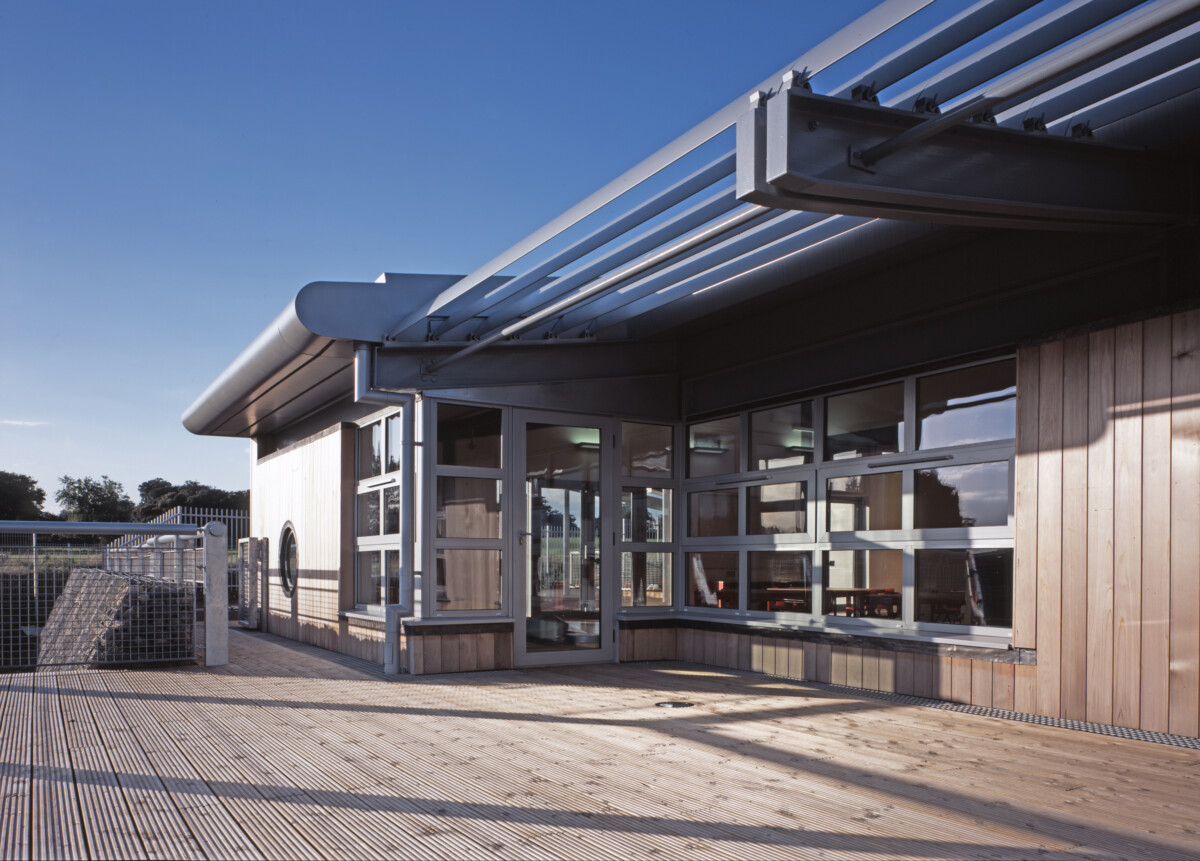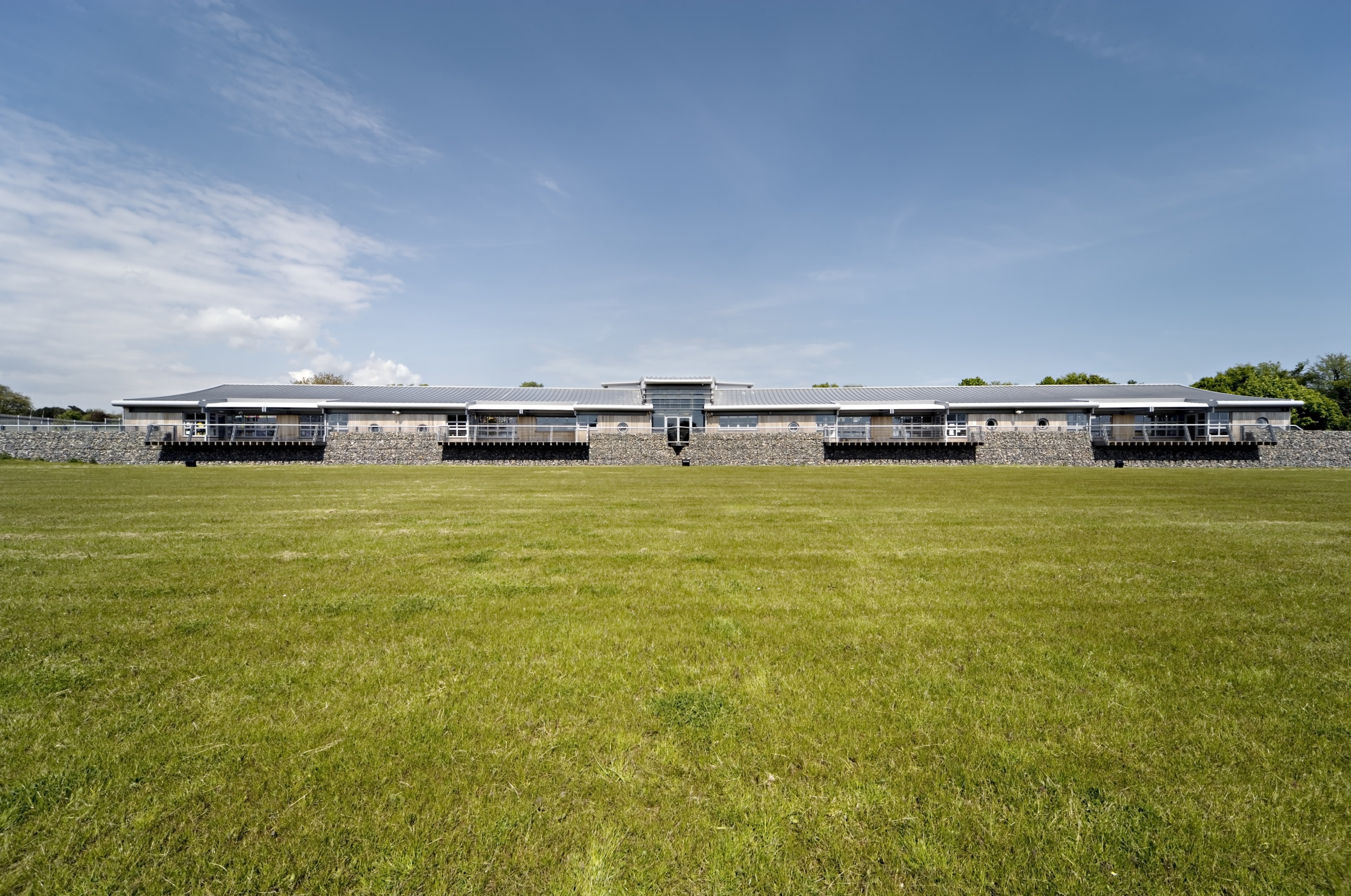
While never the only intention, some buildings are designed to interrupt. Some interrupt space, others what we would normally expect of their type, and still others the way we think about their use. Recipient of multiple awards, St Augustine’s Primary School manages all three – this despite being located in an Area of Outstanding Natural Beauty, in Kent.
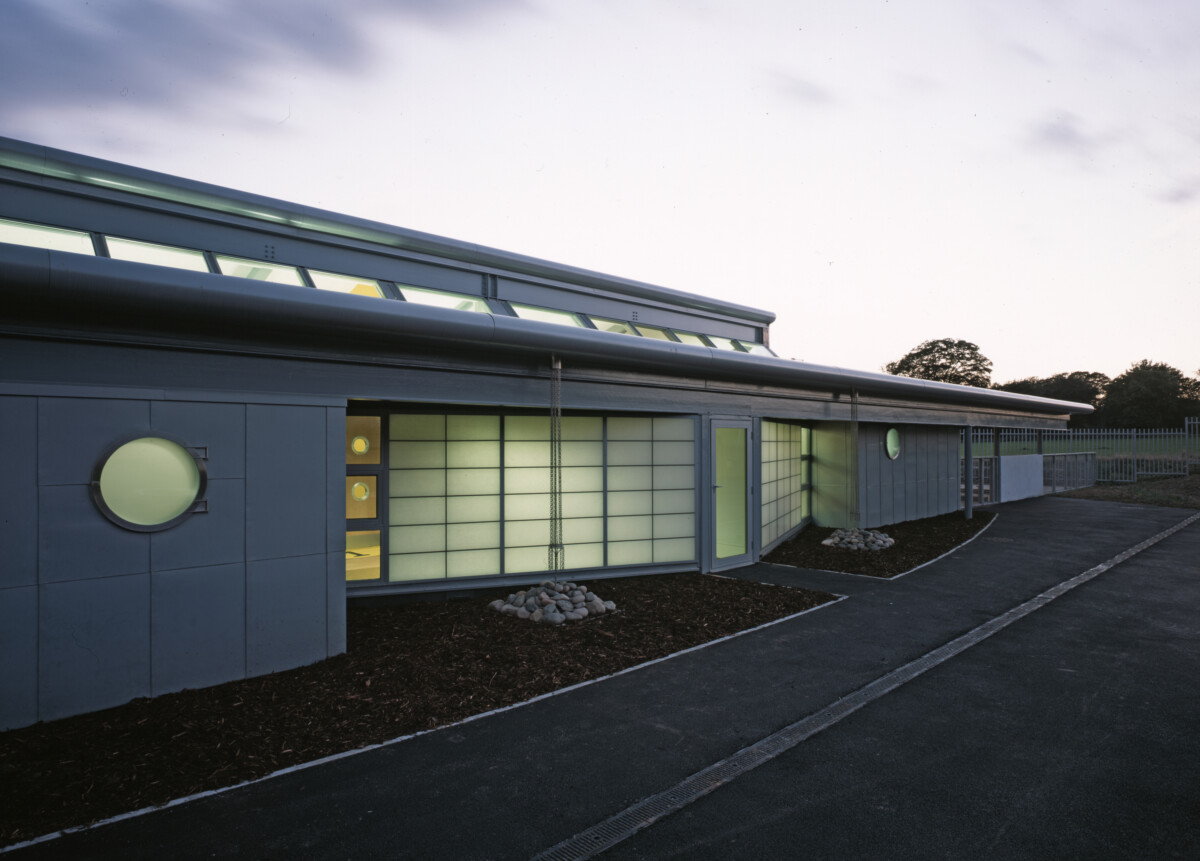
Set across the top of the hill, overlooking the English Channel, the prospect of the sudden appearance of a school in an AONB would give any planning authority the jitters. However, the design – a wave, a pencil mark – allows for the most natural of interruptions, settling into the landscape without ever losing its power to surprise. Equally, that power is to be found in how the design is informed by the habits and behaviours of the young, its meandering physical narrative the embodiment of the way children curve through space, the windows set at heights designed to suit different ages, the corridor less throughway than places to rest, work, and play.
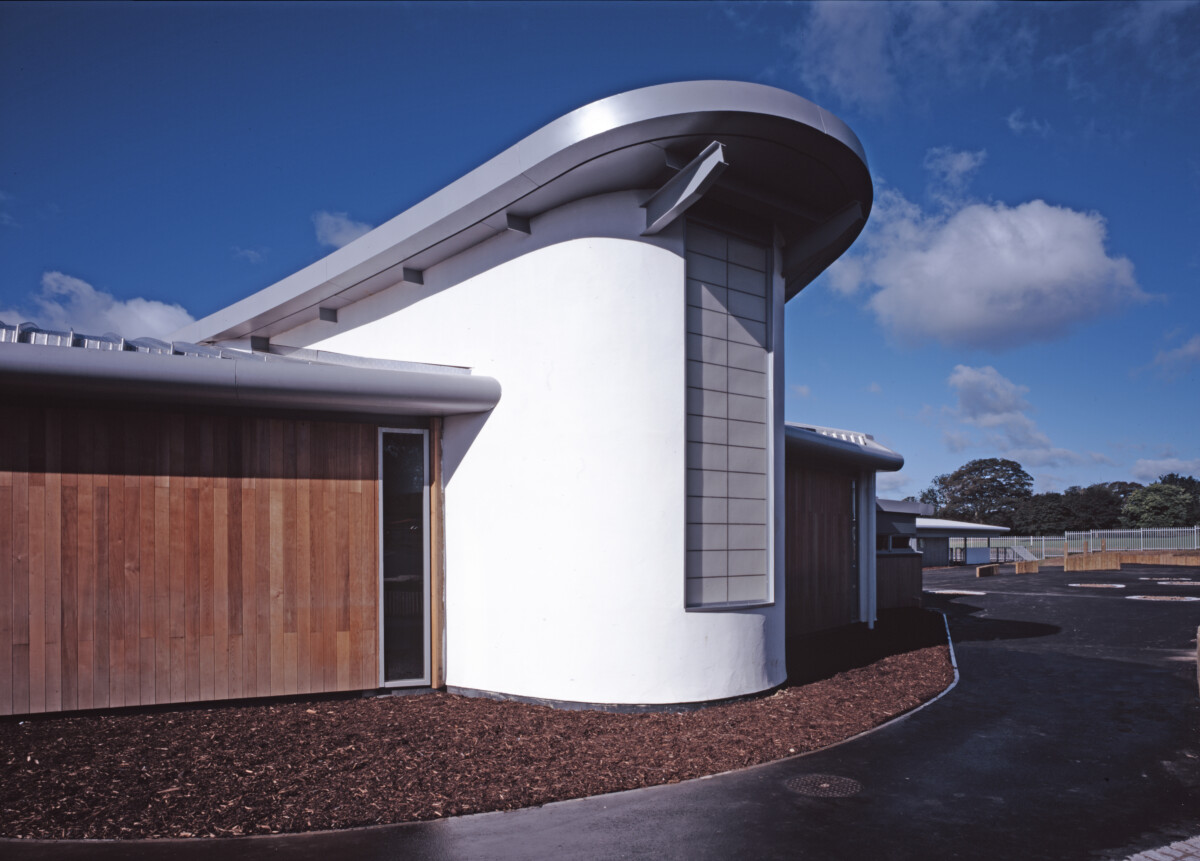
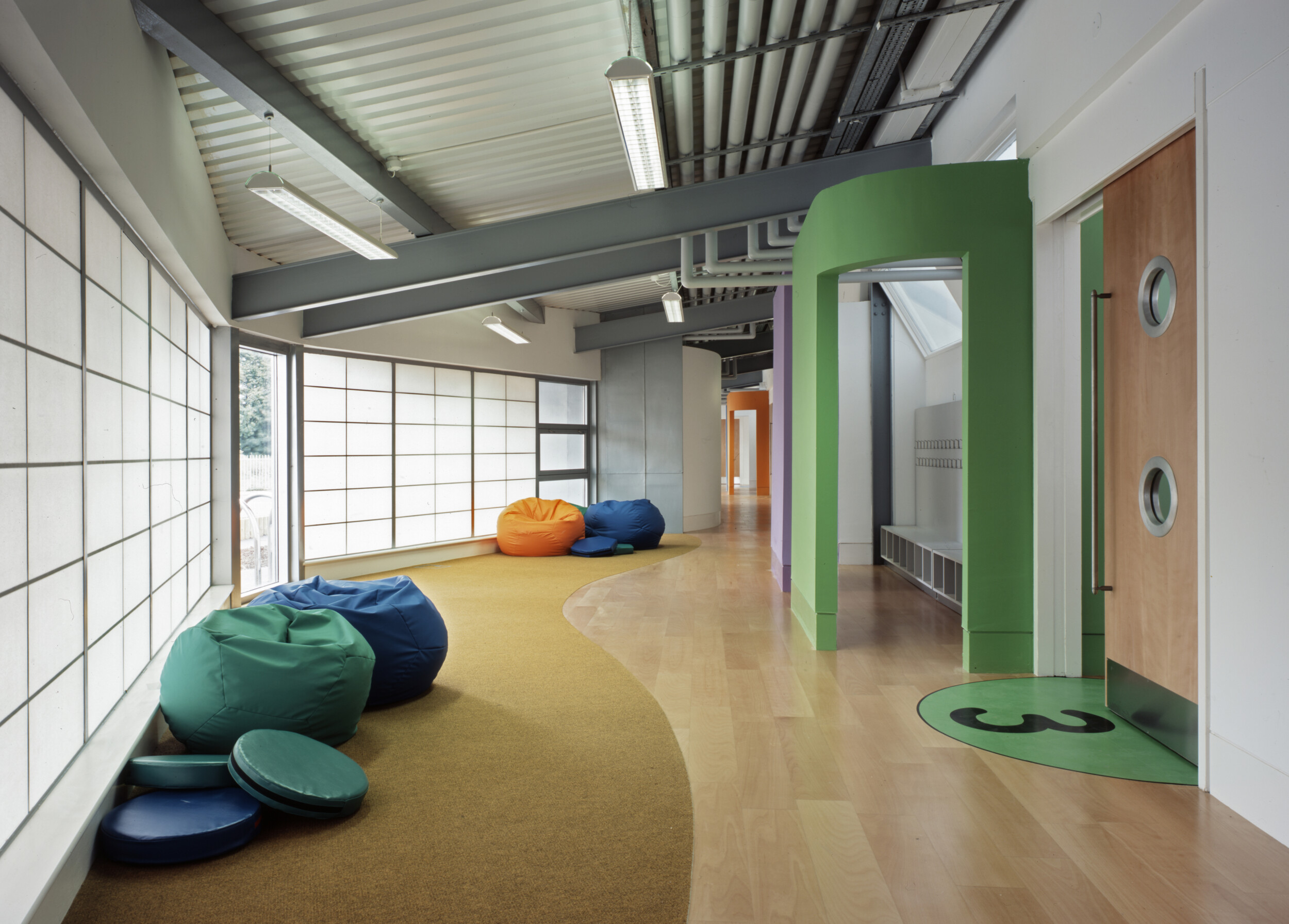
The opposite of the adult-centric designs that mark much of traditional school architecture, St Augustine Primary School is built through the eyes children. As such, it is a self-learning environment, and one whose greatest reward has been to act as catalyst for a new way of thinking about the role of architecture in primary education.
